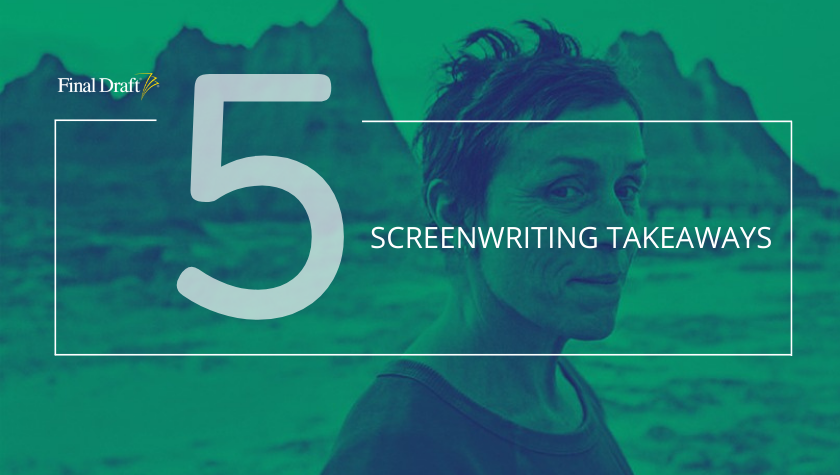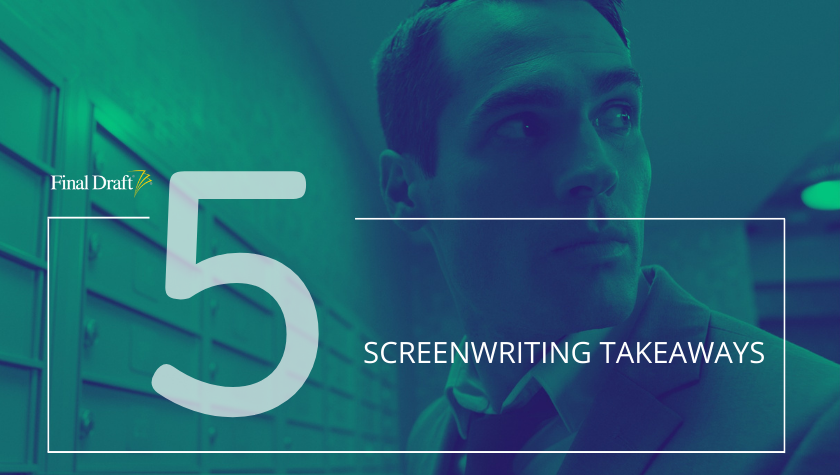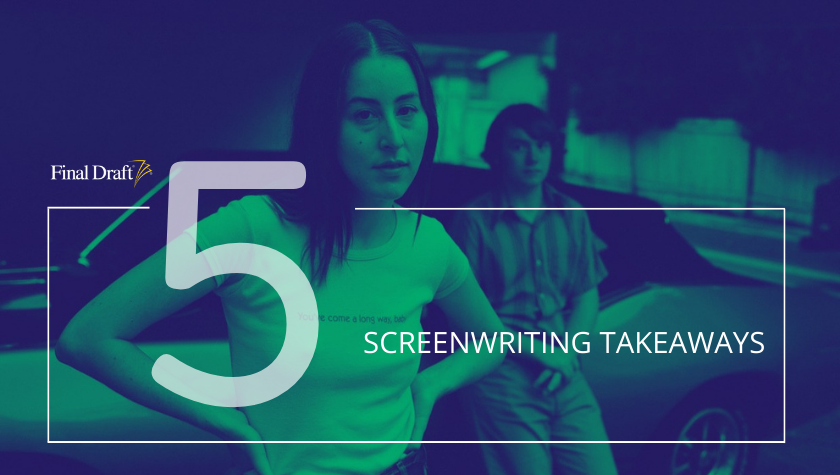5 Screenwriting Takeaways: Signature Wes Anderson is back with 'The French Dispatch'
October 26, 2021
The French Dispatch is about as Wes Anderson as Anderson gets, and most fans will likely be pleased with this latest outing from the beloved director. The set design is off the charts, the characters are as quirky as ever, and the droll wit seems to cut right to the heart. It’s a lovely piece that is a bit hard to write about because there’s so much going on, but Anderson is a master for a reason, and there’s indeed so much to take away, we wish this Takeaways article had room for 10 to 20 instead of just five. But nonetheless, we've chosen our five favorite wonderful ways to appreciate this movie and ways to apply these techniques from a master to your own writing.
1. The subtle connections. Anderson’s world of The French Dispatch (the fictional magazine started in Liberty, Kansas, now published in the town of Ennui, France, and edited by none other than Bill Murray) is what unites some otherwise disparate stories. Murray anchors a ragtag group of writers that without his editor’s eye would absolutely too often go rogue (and likely bankrupt the publication with attempts to write-off everything). It’s Murray’s character who brings the writers back to center, and it’s clear they all adore him just as much as he teases them. He has one rule: No crying in his office. But rules, are made to be broken after all, and there is indeed a time in this film where everyone breaks it.
2. The power of a love story. The connections beyond the magazine are most certainly the love stories of The French Dispatch. A prisoner and a prison guard, a late middle-aged reporter and a young revolutionary. A food writer and a chef. A staff and their editor. Sometimes, love is discovered through traditional physical means, and sometimes it’s simply through the power of writing about a subject or finally discovering the core theme of a story. These unusual love stories are indeed the deepest ideas of connection throughout the film.
3. A beloved art form: The magazine. What feels unique about this film, is we do not always get a lot of character backstory. Instead, each character’s chapter (that leaps from the New Yorker-style images on the page, for which the fictional The French Dispatch is a stand-in) hops to life through their writing. This movie is about the work of the writer and the adventure, but also the distance they sometimes have with their subjects (or in the case of Frances McDormand’s character of Lucinda Krementz, the unintended closeness). It is lovely to see Anderson’s reverence for the process, and in an era where print struggles to survive, the film is also a nice reminder of the transformational power of long-form journalism.
4. The substance behind the style. Anderson, of course, is known for his style. For die-hard fans, they are likely already familiar with Accidental Anderson the book that sprouted from fan photographs that felt like a Wes Anderson movie. It’s on full display here and much credit is due to production designer Adam Stockhausen who helped create very different stylistic worlds for each chapter. Each chapter feels specific to the decade and the main character of the chapter itself. Storytellers and subjects each get their own aesthetic, and often their own color palette. Animation, graphics and still life are all on the table making this one of Anderson’s richest worlds yet, and one that almost instantly demands a re-watch to catch all details on display.
5. Never-ending nostalgia. This film has a particularly nostalgic feel. While so much of the story is inspired by and can be traced back to New Yorker articles (particularly McDormand’s section, which is a fictional look at Mavis Gallant’s work in France which resulted in the article “The Events in May: A Paris Notebook.” But Anderson’s nostalgia cuts hard here. Perhaps it’s the way he contrasts a journalistic tone with an occasional emotional one. It sometimes takes an outsider’s eye (or in this case, the eye of a filmmaker) to cut through any contextual fluff and remind the world there is always humanity in every story.
Final Takeaway: The French Dispatch is signature Anderson and will likely delight fans of his work. What stands out here beyond his incredible attention to detail, memorable, eccentric characters, and incredible world-building, is that he allows deep emotion to contrast distant, reporting-style-like writing. It’s effective in creating cutting and surprising emotion (something Anderson does equally effectively in The Royal Tenenbaums). It’s a joy to watch signature Anderson back in full force.
Photo courtesy of Searchlight Pictures.
Written by: Lindsay Stidham
Lindsay holds an MFA in screenwriting from the American Film Institute. She has overseen two scripts from script to screen as a writer/ producer. SPOONER, starring Matthew Lillard (SLAMDANCE), and DOUCHEBAG (SUNDANCE) both released theatrically. Most recently Lindsay sold PLAY NICE starring Mary Lynn Rajskub. The series was distributed on Hulu. Recent directing endeavors include the Walla Walla premiering (and best screenplay nominated) TIL DEATH DO US PART, and the music video for Bible Belt’s Tomorrow All Today. Lindsay is currently working on an interactive romcom for the production company Effin' Funny, and a feature film script for Smarty Pants Pictures. Lindsay also currently works as an Adjunct Screenwriting Faculty member at USC’s School of Cinematic Arts. You can follow her work here: https://lindsaystidham.onfabrik.com/



